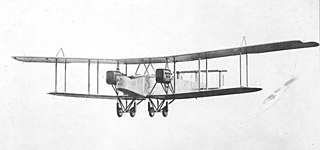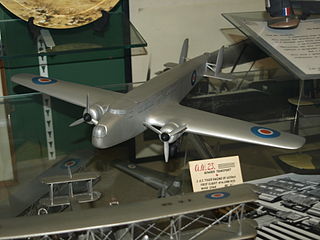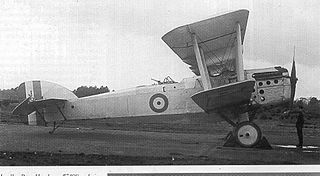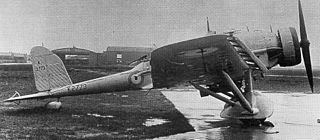Related Research Articles

The Handley Page Type O was a biplane bomber used by Britain during the First World War. When built, the Type O was the largest aircraft that had been built in the UK and one of the largest in the world. There were two main variants, the Handley Page O/100 (H.P.11) and the Handley Page O/400 (H.P.12).

The Bristol Bombay was a British troop transport aircraft adaptable for use as a medium bomber flown by the Royal Air Force (RAF) during the Second World War.

The Handley Page Heyford was a twin-engine biplane bomber designed and produced by the British aircraft manufacturer Handley Page. It holds the distinction of being the last biplane heavy bomber to be operated by the Royal Air Force (RAF).

The Armstrong Whitworth A.W.23 was a prototype bomber/transport aircraft produced to specification C.26/31 for the British Air Ministry by Armstrong Whitworth Aircraft. While it was not selected to meet this specification, it did form the basis of the later Armstrong Whitworth Whitley aircraft.

The Short Springbok was a two-seat, all-metal reconnaissance biplane produced for the British Air Ministry in the 1920s. All together six aircraft of the Springbok design were built but none entered service with the armed forces.

The Handley Page H.P.54 Harrow was a heavy bomber designed and produced by the British aircraft manufacturer Handley Page. It was operated by the Royal Air Force (RAF) and saw use during the Second World War, although it was quickly overshadowed as a bomber by larger and more capable alternatives.

The Gloster TC.33 was a large four-engined biplane designed for troop carrying and medical evacuation in the early 1930s. Only one was built.

The Vickers Type 253 was a single-engined two-seat biplane general-purpose military machine built to a 1930 government specification. It won a production contract, but this was transferred to the same company's monoplane equivalent, the Wellesley. Only one Type 253 was built.

The Fairey G.4/31 was a British single-engined, two-seat biplane contender for an Air Ministry specification for a multi-role or general purpose aircraft. Unsuccessful, only one was built.
The Handley Page Type A, sometimes called "Bluebird" and later designated HP.1, was the first powered aircraft designed and built by Frederick Handley Page.

The Handley Page Handcross was a single-engined biplane day bomber built to an Air Ministry specification. It was not put into production and only the three prototypes were built.

The Handley Page H.P.43 was a three-engined biplane bomber-transport built to an Air Ministry specification. It did not fly well and the biplane configuration was out-dated at completion; the only one constructed was later turned into a monoplane and led to the Handley Page H.P.54 Harrow.
The Handley Page H.P.46 was a two-seat, single-engined biplane built to an Air Ministry specification for a carrier-based torpedo bomber. With an advanced combination of high lift, slow flying controls it was beset by handling problems and made few flights.

The Handley Page H.P.47 was a British single-engined low-wing monoplane built to an Air Ministry specification for a general-purpose bomber and torpedo bomber aircraft. Only one was built.

The Handley Page H.P.20 was an experimental monoplane modification of a de Havilland DH.9A, built to study controllable slots and slotted ailerons as high lift devices. It was the first aircraft to fly with controllable slots.

The Handley Page H.P.31 was a two-seat single-engined biplane built to a British specification for a carrier-based torpedo bomber and reconnaissance aircraft. After trials, the Blackburn Ripon was preferred, though the Harrow played a significant role in the development of automatic slots.

The Handley Page Type D or H.P.4 was a single-seat, single-engined tractor monoplane, the first Handley Page design to fly for more than a few hops. Only one was built.

The Handley Page Type E was a two-seat, single-engined monoplane intended as a demonstrator. Though only one was built, it flew successfully from 1912 to 1914, carrying several hundred passengers and flying several thousand miles.
The Westland PV.7 was a private venture submission to a 1930s British specification for a general-purpose military aircraft with two crew. It was a single-engined, high-wing monoplane of promise, but was destroyed early in official tests.
The Pegna-Bonmartini Rondine, or Pegna Rondine, is a single-seat ultralight sport aeroplane designed by Giovanni Pegna and built by Piaggio in Italy during 1923.
References
Citations and notes
- 1 2 3 4 5 6 7 8 9 10 11 12 Barnes & James 1987 , pp. 347–51
- 1 2 Barnes & James 1987 , pp. 338–46
- ↑ "Handley Page Heyford - What Do We Have?". Royal Air Force Museum. Archived from the original on 5 June 2011. Retrieved 1 November 2009.
- ↑ Barnes does not say if these performance figures were with the Pegasus engines or the earlier Tigers
Cited sources
- Barnes, C. H.; James, D. N. (1987). Handley Page Aircraft since 1907. London: Putnam. ISBN 0-85177-803-8.